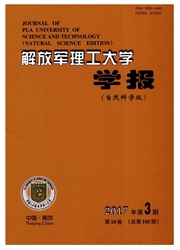

 中文摘要:
中文摘要:
为揭示飑线发生过程中内部中尺度风场的演变特征,利用江苏连云港和盐城的多普勒雷达资料,采用双多普勒雷达风场反演技术,对2012年5月16日江苏中北部的一次弱弓形飑线过程进行了综合分析。结果表明:飑线后方入流最早出现在系统后部的层状区中,在飑线中段的中尺度涡旋对和地面冷池的共同作用下,后方入流向前延伸并穿过对流区下沉到达地面;飑线后方入流把云外干冷环境空气带到系统内,加剧降水粒子的蒸发冷却过程,促使地面冷池及其外流的加强;后方入流与地面冷池外流的耦合是地面大风生成的主要原因。
 英文摘要:
英文摘要:
To reveal the mesoscale wind field characteristics in the process of squall line,using the wind fields retrieved by the dual-doppler radar at Lianyungang and Yancheng,the ground automatic observations,and NCEP 1°×1°reanalysis data,the evolution process of a weak-bow squall line occurred in Jiangsu province on 16 May 2012 was calculated.The system-relative horizontal wind indicates that the rear inflow firstly concentrated in the stratiform region at the middle troposphere,strengthened by the mesovortices and then extended to the back edge of convective region with the development of the squall line.The rear inflow transported the cold and dry midlevel air into the middle lower part of the convective region,which strengthened the evaporative cooling process and forced the generation of intensive cold pool outflow and surface high wind.Corresponded to the mesoscale counterclockwise circulation located at the rear of the system,the rear inflow gradually descended to the ground and made a directly contribution to the genesis of straight-line wind.
 同期刊论文项目
同期刊论文项目
 同项目期刊论文
同项目期刊论文
 期刊信息
期刊信息
